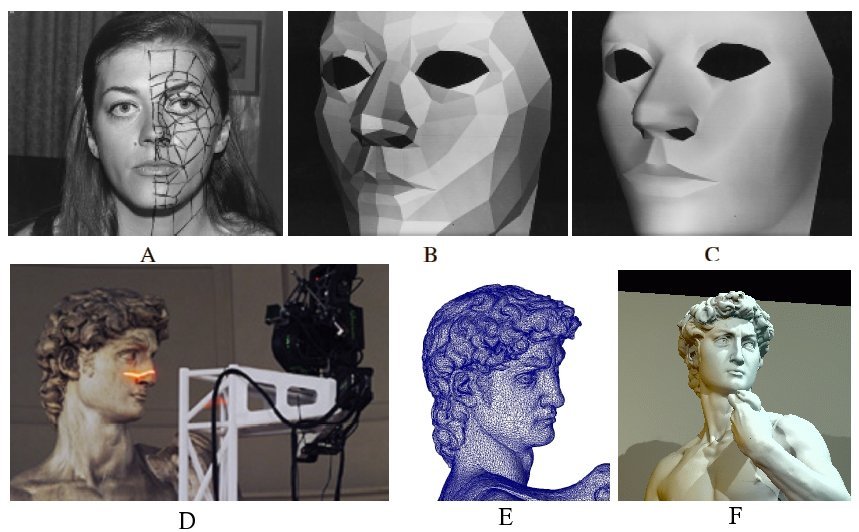Section: Scientific Foundations
Introduction
|
Computer Graphics is a quickly evolving domain of research. These last few years, both acquisition techniques (e.g., range laser scanners) and computer graphics hardware (the so-called GPU's, for Graphics Processing Units) have made considerable advances. However, as shown in Figure 1 , despite these advances, fundamental problems still remain open. For instance, a scanned mesh composed of hundred million triangles cannot be used directly in real-time visualization or complex numerical simulation. To design efficient solutions for these difficult problems, ALICE studies two fundamental issues in Computer Graphics:
-
the representation of the objects, i.e., their geometry and physical properties;
-
the interaction between these objects and light.
Historically, these two issues have been studied by independent research communities. However, we think that they share a common theoretical basis. For instance, multi-resolution and wavelets were mathematical tools used by both communities [31] . We develop a new approach, which consists in studying the geometry and lighting from the numerical analysis point of view. In our approach, geometry processing and light simulation are systematically restated as a (possibly non-linear and/or constrained) functional optimization problem. This type of formulation leads to algorithms that are more efficient. Our long-term research goal is to find a formulation that permits a unified treatment of geometry and illumination over this geometry.



